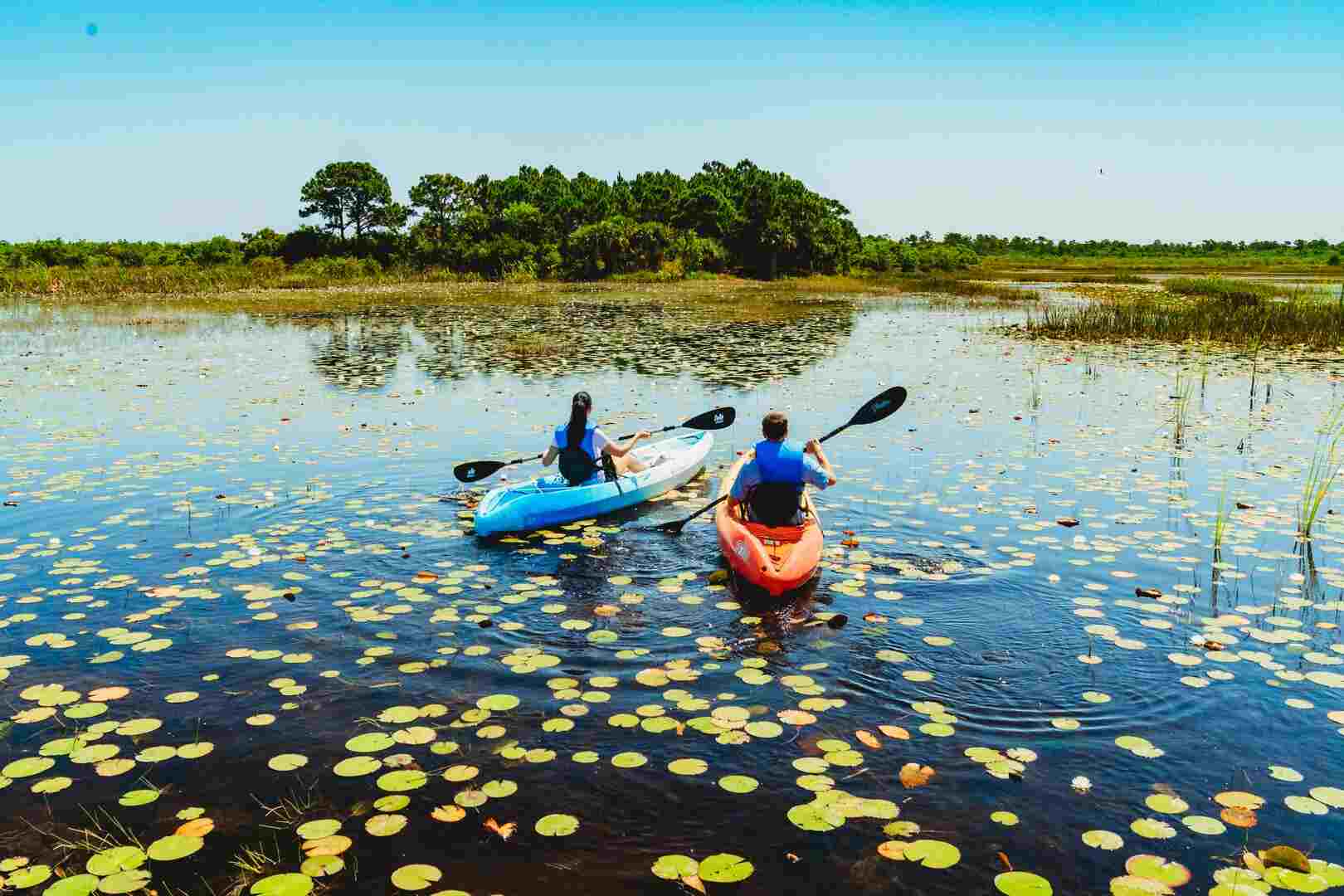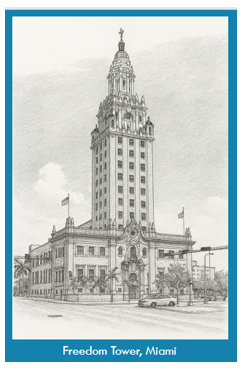- Home
- Florida History
- Florida Heritage Sites
- Savannas Preserve State Park
SAVANNAS PRESERVE
STATE PARK
By Mike Miller November 25, 2025
OVERVIEW
Savannas Preserve State Park covers 7,000 acres from Fort Pierce to Jensen Beach, Florida. It protects the largest intact freshwater marsh in Southeast Florida.
It’s comprised of six natural communities: pine flatwoods, wet prairie, basin marsh, marsh lake, sand pine scrub, and scrubby flatwoods.
Each community is home to its own fauna and flora. Mangroves border the coastal edges. It provides a habitat for threatened species like gopher tortoises and Florida scrub jays.
 Kayaking at Savannas Preserve State Park
Kayaking at Savannas Preserve State ParkYou can view the ecosystem from trails and boardwalks or kayaks.
HISTORICAL SIGNIFICANCE
Native Americans, primarily the Ais and Jeaga tribes, first inhabited the savannas along the North Fork of the St. Lucie River for thousands of years.
Their shell middens and campsites are sprinkled throughout the preserve. Spanish explorers encountered these tribes in the 1500s and recorded the area’s rich fisheries.
By the mid-1700s, minor European settlement began. The U.S. acquired Florida in 1821.
In 1879, Captain Thomas Richards planted the first pineapples in the area, grown from cuttings he transported from Key West. The plants thrived in the sandy, well-drained soils of the Atlantic Ridge and dozens of farms soon appeared.
Captain Richards’ family, including his daughter Lucie, soon joined him at their new estate, named Eden Grove House.
Lucie began writing letters to an old friend in New Jersey that detailed her daily life as a Florida Pioneer. The letters have since been compiled into a book called "The Memories of Eden”, by Lucie Richards.
Miss Lucie’s letters provide us with invaluable insight into what the life of a pioneer entailed. The book is available on the Internet Archive’s Open Library.
The land the Richards’ resided on lies along and within the southeastern boundary of the park. The Jensen Beach area was known as the Pineapple Capital of the World until about 1920.
After devastating freezes, farmers shifted to citrus and cattle, leaving behind old road scars, pioneer shacks, and a small concrete bridge that survive today.
Through the early 20th century, the land remained mostly in private hands, used for grazing and small farms.
In 1972, the State of Florida designated the North Fork of the St. Lucie River an Aquatic Preserve to protect its water quality.
In the 1990s the state began purchasing land from private owners to prevent development. The acquisitions eventually totaled over 7,000 acres and in 1998 the park officially opened to the public.
Savannas Preserve State Park contains nearly all of the remaining populations of the fragrant prickly-apple (Harrisia fragrans), an endangered cactus species.
It’s also home to a rare plant that only grows in the park (in the whole world), the savannas mint. Wildlife enthusiasts and photographers will enjoy the diversity of habitats in this undisturbed area.
It’s home to a variety of wildlife. You may see a gopher tortoise, deer, marsh rabbit or alligator. It’s recognized as a hotspot on The Great Florida Birding Trail.
There have been sightings of Sandhill Cranes, Wood Storks, Roseate Spoonbills, migratory ducks, Purple Gallinules, Bald Eagles and Florida Scrub Jays (22 live in the park).
VISITING DETAILS
Savannas Preserve State Park is at 2541 SE Walton Road, Port St. Lucie, FL 34952. The main entrance at Walton Street has the Education Center, picnic areas, and trail access.
Another entrance is in Martin County at 700 Jensen Beach Boulevard, Jensen Beach, FL 34957, with access to several trails, restrooms and picnic tables.
The park is open daily from 8 AM to sunset. The Savannas Education Center is currently closed for renovations as of November 2025.
Parking is available near the entrance. Restrooms are at each picnic pavilion, the canoe launch and the education center.
Fun activities include hiking the 5-mile White Trail or paddling the Halpatiokee Canoe Trail. Visitors can launch their own canoes and kayaks at one of two boat ramps, one at the Walton Road access and the other at the Evans Creek access along US-1.
Pavilions and picnic tables are available near the Center and at trail heads throughout the park.
The park has over 15 miles of multi-use trails for hiking, bicycling and horseback riding (bring your own).
There is a designated equestrian area for those who trailer their horses. Check their website for trail closures and special events like stargazing or guided hikes.
SAVANNAS PRESERVE STATE PARK WEBSITE
LOCATION MAP

Florida is the fastest-growing state in the United States and also the fastest-changing. If you see anything in this article that has changed or is in error, please let me know.
Thousands of Florida fans subscribe to our free daily Ezine, Florida Heritage Travel and we have 130,000 followers on Facebook.
By Mike Miller, Copyright 2009-2025
Florida-Back-Roads-Travel.com
Florida Back Roads Travel is not affiliated with or endorsed by Backroads, a California-based tour operator which arranges and conducts travel programs throughout the world.
